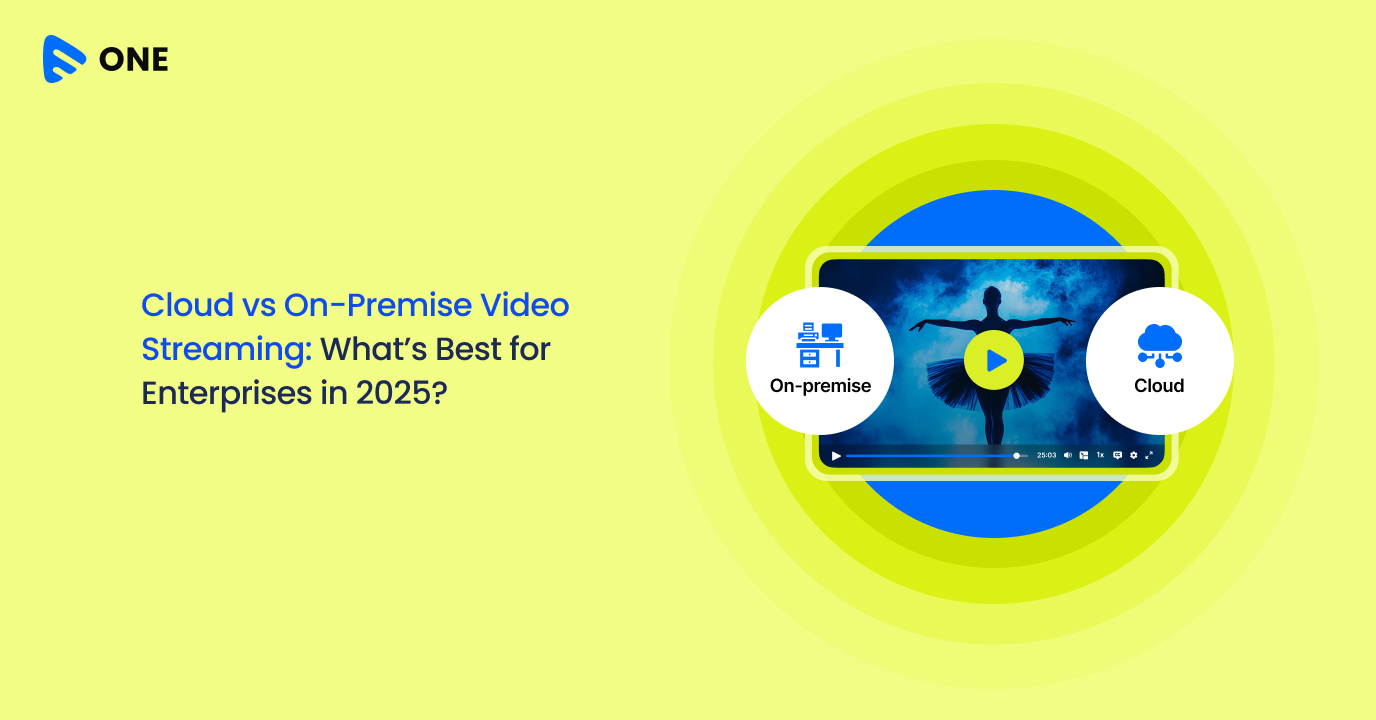In live streaming, Video bitrate plays a crucial role in determining the quality of the video being delivered to viewers. Higher bitrates generally result in better video quality. A higher bitrate allows for more detail and clarity in the video stream, resulting in a sharper image, smoother motion, and better color reproduction. Different devices and platforms have varying capabilities to decode and display video streams at different bitrates. It’s crucial to optimize the bitrate for compatibility with the devices and platforms your viewers are using.
Importance of Video Bitrate in Live Streaming
Video streaming bitrate is a vital factor in live streaming as it directly impacts the quality and smoothness of the viewing experience for the audience.
Quality of Video: Video Bitrate determines the amount of data transmitted per second. Higher bitrate allows for better video quality with more details, sharper images, and smoother motion. A low bitrate can result in pixelation, blurriness, and artifacts, especially during scenes with a lot of motion or detail.
Resolution Support: Higher resolutions, such as 1080p video bitrate or 4K, require higher bitrates to maintain quality. Without an adequate bitrate, streaming high-resolution video can lead to degradation in quality and loss of detail.
Smooth Playback: Inadequate video bitrate can lead to buffering and stumbling during playback, as the viewer’s device struggles to receive and process the video data in real-time. Higher bitrate ensures smoother playback, reducing interruptions and providing a more immersive viewing experience.
Adaptive Streaming: Many streaming platforms use adaptive bitrate streaming (ABR), where the video quality adjusts dynamically based on available bandwidth and device capabilities. Having multiple bitrate options allows viewers with varying internet speeds to enjoy the stream without buffering or quality degradation.
Bandwidth Considerations: While higher bitrates result in better quality, they also require more bandwidth for streaming. Content creators and streaming platforms need to balance bitrate with the available internet speeds of their audience to ensure accessibility without sacrificing quality.
Encoding Efficiency: Efficient encoding techniques, such as using advanced video codecs like H.264 or H.265, can help maintain quality at lower bitrates. Optimizing encoding settings and utilizing modern compression algorithms can reduce the bitrate required for streaming without significant loss of quality.
Choose Muvi Live and Deliver Unparalleled Streaming Experience! Start For Free Now!
What is Video Bitrate?
What does bitrate mean? Video bitrate refers to the amount of data processed per unit of time in a video file, typically measured in bits per second BPS or kilobits per second KBPS for lower resolutions and megabits per second MBPS or even gigabits per second GBPS for higher resolutions. Video bitrate represents the amount of data used to encode each second of video. Higher bit rates generally result in better video quality but require more bandwidth for streaming or storage.
Video Bitrate – How does it affect video Quality?
A higher bitrate results in better video quality. This is because a higher bitrate allows for more data to be allocated to each frame of the video, resulting in greater detail, clarity, and fidelity in the video image. With more data available per second, there is less compression needed, preserving more of the original video information.
When the bitrate is too low, the video codec employs more aggressive compression techniques to reduce file size, resulting in visible compression artifacts such as blackness, blurriness, and pixelation. These artifacts can be particularly noticeable in fast-moving scenes or areas with intricate details.
For streaming services, bitrate is a critical consideration because it directly affects bandwidth usage. Higher bitrates mean more data transfer, which requires a faster internet connection for smooth playback without buffering. Therefore, streaming services often use adaptive bitrate streaming, where the video quality dynamically adjusts based on available bandwidth and device capabilities.
How is Video Bitrate Measured?
Video bitrate is a measure of the amount of data used to encode one second of video footage. It’s typically expressed in bits per second (bps), kilobits per second (kbps), megabits per second (Mbps), or gigabits per second (Gbps).
Video bitrate formula (bps) = Target pixel count/resolution x frame rate x 1/2/4 (depending on how dynamic your video is) x 0.07.
Factors Affecting Video Bitrate
Video bitrate refers to the amount of data transferred or processed per unit of time in a video stream. It’s a vital factor in determining the quality and size of a video file. Various factors affect video bitrate, such as:
Resolution:
- Resolution refers to the number of pixels in each dimension that the video consists of (e.g., 1920×1080 for Full HD).
- Higher resolutions demand more data to represent the additional pixels. Therefore, higher resolution videos typically require higher bitrates to maintain quality.
- For example, a 720p video requires less bitrate than a 1080p video, and a 4K video requires even more bitrate due to the increased pixel count.
Frame Rate:
- Frame rate denotes the number of individual frames shown per second in a video. Common frame rates include 24, 30, and 60 frames per second (fps).
- Higher frame rates result in smoother motion but also require more data to represent the additional frames.
- Doubling the frame rate roughly doubles the amount of data needed per second, which can significantly impact bitrate requirements.
Compression Techniques:
- Compression techniques reduce the size of video files by eliminating redundant or unnecessary data while preserving visual quality.
- There are two main types of compression: lossy and lossless. Lossy compression sacrifices some quality for smaller file sizes, while lossless compression retains all original quality but typically results in larger files.
- Popular compression standards like H.264, H.265 (HEVC), and AV1 use various algorithms to compress video data efficiently.
- The choice of compression technique can greatly impact bitrate requirements. For example, a video encoded with a more advanced codec like H.265 may achieve the same quality at a lower bitrate compared to an older codec like H.264.
Content Complexity:
- Content complexity refers to the amount of detail and variation present in the video.
- Videos with high levels of motion, fine details, or rapid changes in scene content require higher bitrates to maintain quality.
- For example, a static talking head video may require lower bitrate compared to a fast-paced action sequence with many moving objects and complex backgrounds.
- Compression algorithms may struggle to efficiently encode highly complex scenes, resulting in higher bitrates to preserve quality.
Switch To Muvi Live Today And Provide Seamless Streaming Experience To Your Audience! Start For Free Now!
The Role of Video Bitrate in Live Streaming
Quality of Experience (QoE):
Resolution and Clarity:
Video bitrate determines the amount of data transmitted per unit of time, which directly affects the resolution and clarity of the streamed content. Higher bitrates allow for higher resolutions (such as 1080p or 4K) and better visual quality with more details and sharpness.
Smooth Playback:
Adequate video bitrate ensures smooth playback by providing sufficient data to render each frame of the video without interruptions or stuttering. Insufficient bitrate can result in pixelation or compression artifacts, leading to a degraded viewing experience.
Reduction of Buffering and Lag:
Higher or best video bitrates help reduce buffering and lag by ensuring a steady stream of data to the viewer’s device. Buffering occurs when the device doesn’t receive data quickly enough to keep up with playback, leading to pauses or delays. A higher bitrate provides more data bandwidth, minimizing these issues.
Bandwidth Considerations:
Bandwidth Availability:
The available bandwidth of both the streaming server and the viewer’s internet connection determines the maximum bitrate that can be sustained without causing buffering or degraded quality. It’s essential to consider the bandwidth constraints of both the video streaming platform and the audience.
Adaptive Bitrate Streaming (ABR):
ABR is a technique used to dynamically adjust the video bitrate based on the viewer’s network conditions, device capabilities, and available bandwidth. This adaptive approach ensures a consistent viewing experience by automatically switching between different bitrate renditions of the same content. Viewers with slower connections receive lower bitrate streams, while those with faster connections can enjoy higher quality.
Impact on Viewer Engagement:
The video bitrate directly influences viewer engagement and satisfaction. Higher quality streams with smoother playback and clearer visuals tend to attract and retain more viewers. On the other hand, poor quality streams with buffering or pixelation can lead to viewer frustration and abandonment.
Ending Notes
The importance of video bitrate cannot be overstated in modern multimedia consumption. It directly impacts the quality, clarity, and overall viewing experience of videos across various platforms and devices. Optimal bitrate selection ensures smoother playback, reduces buffering, and maintains fidelity to the original content.
Through its advanced encoding capabilities, Muvi Live automatically adjusts video bitrate based on network conditions, device capabilities, and other relevant factors. This adaptive bitrate streaming ensures smooth playback and consistent quality across varying internet connections.
Experience seamless adaptive bitrate streaming with Muvi Live! Harness the power of adaptive media and chunked delivery to effortlessly encode multi-format, multi-device video content while optimizing bandwidth consumption. Elevate your user experience to new heights. Try Muvi Live for free today and revolutionize your streaming capabilities.

















Add your comment